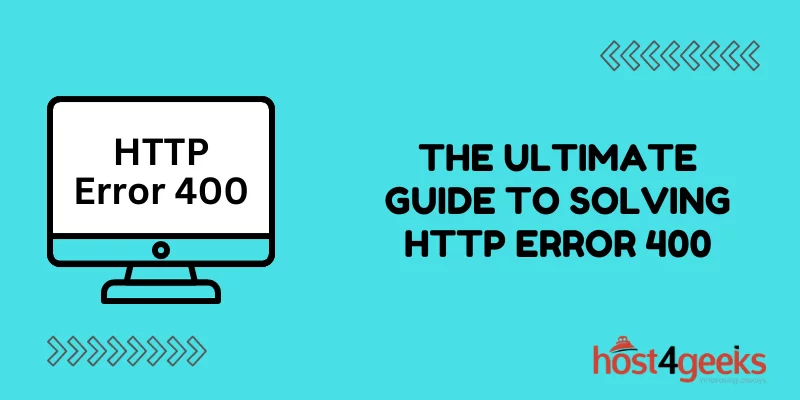In the fast-paced digital landscape, where a fraction of a second can make a substantial difference, encountering a barrier like the HTTP Error 400 can be a frustrating experience.
This error, denoted by “A Request Header Field is Too Long,” can disrupt the seamless flow of information between your browser and the webserver, causing unnecessary delays.
In this comprehensive guide, we will delve into the depths of this error, unravel its mysteries, and offer you a step-by-step solution to overcome it effectively.
Understanding HTTP Error 400
The HTTP Error 400, often referred to as a “Bad Request” error, is one of the most common HTTP status codes. It signifies that the server did not understand the request due to malformed syntax.
Specifically, in the case of “A Request Header Field is Too Long,” it suggests that the data transmitted in the request header exceeds the server’s permissible limits.
The request header contains important information like the URL, browser details, cookies etc. If this header is too large, the server will be unable to process the request appropriately.
Causes of the Error
There are a few key reasons why you may encounter this particular 400 error:
Excessive Data: One of the primary reasons for encountering this error is an excessively long request header. The HTTP protocol sets a limit on the length of the header fields, and if your request exceeds this limit, you’ll receive the 400 error.
For example, if your URL contains too many parameters or your cookies are too large, this could result in the header size exceeding the server’s permissible limit.
Incorrect URL: A malformed URL with incorrect encoding or formatting can also trigger this error. URLs follow a standard structure like http://www.example.com/page.
Ensure that your URL is structured correctly without any typos or encoding issues.
Browser Issues: Sometimes, the error may stem from your browser itself. An outdated browser or one with corrupt browser data can end up generating oversized headers.
Clearing cache and cookies or switching to a different updated browser can sometimes resolve the underlying problem.
The Implications
Experiencing an HTTP Error 400 can have significant implications on your site’s performance and user experience. It disrupts the communication between your browser and the server, preventing the retrieval of the desired webpage.
This can lead to user frustration from broken pages, loss of potential customers due to errors, and a decrease in the credibility of your website. Speed and performance are critical for retaining users, and a 400 error negatively impacts both.
Resolving the HTTP Error 400
Let’s dive into the practical steps you can take to resolve this error efficiently.
1. Check the URL
First, verify the URL for any typos, incorrect encoding, missing characters, or incorrect formatting. Encoding issues like uppercase letters in the URL could be parsed incorrectly by the server. Ensure that it conforms to the standard URL structure including the protocol, subdomain, domain, and query parameters.
2. Clear Browser Data
If the error persists, try clearing your browser’s cache and cookies. Over time, browser data like cookies, cached files, and browsing history can accumulate and result in performance issues. Clearing this outdated or corrupted data can help troubleshoot header size problems. Try clearing this data and reloading the page.
3. Shorten the Request Header
If you’re still encountering the 400 error, you likely need to shorten the request header itself. This can be done by optimizing the code responsible for generating the header on the server side.
Ensure the header fields like cookies and URLs comply with size limits. Compressing large cookie values is one technique to reduce header size.
4. Use a Different Browser
Switching to an alternative updated browser can sometimes solve the problem. Different browsers have varying tolerance for header field length limits. Try the latest versions of Chrome, Firefox or Edge to see if they can properly process the request.
5. Contact the Website Administrator
If none of the above steps work, it’s a good idea to directly contact the website administrator or developer. They may need to make changes on the server side to increase the permissible header field size limits or optimize the header generation process to accommodate your request.
Preventing Future Occurrences
To ensure you don’t encounter HTTP 400 errors in the future, consider the following best practices:
- Keep your request headers lean and within size limits by optimizing code and limiting cookies.
- Regularly check website code to ensure efficient header field generation without bottlenecks.
- Use the latest browser versions and stay updated on technology changes to prevent incompatibilities.
- Monitor site performance to quickly catch and fix emerging header size problems.
Conclusion
In conclusion, while HTTP Error 400 can disrupt your site’s performance, it is a solvable issue.
By following the troubleshooting steps outlined in this guide and adopting preventative best practices, you can navigate past this error and provide a smooth browsing experience. Mastering headers is key for any web developer looking to build robust, optimized sites.

2 thoughts on “The Ultimate Guide to Solving HTTP Error 400: A Request Header Field is Too Long”
I HAVE ERROR 400 AND I HAVE DONE EVERYTHING…IT IS STILL THERE
What is the URL/Domain you are trying to access?